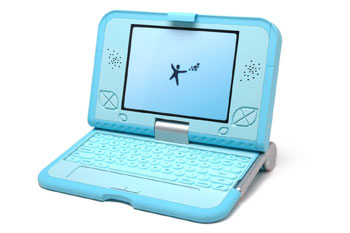Bill Gates says laptop for the poor is a joke
Rhett A. Butler, mongabay.com
March 15, 2006
Microsoft’s Bill Gates mocked a $100 laptop computer for developing countries being developed at the Massachusetts Institute of Technology (MIT).
MIT, with support from Google, AMD, Brightstar, News Corporation, and Red Hat, is developing the low-cost laptop to boost education efforts in the some of the world’s poorest regions. According to MIT, the Linux-based, full-color, full-screen laptop will use innovative power sources — including batteries or hand crank — and aims to do most everything that a standard laptop can do except store large amounts of data. The rugged laptops will be WiFi- and cell phone-enabled, and have USB ports, a 500MHz processor, and 1 gigabyte of storage capacity using flash memory instead of a hard disk.
MIT is working with the not-for-profit company One Laptop per Child (OLPC) to distribute laptops through those ministries of education willing to adopt a policy of “One Laptop per Child.” MIT believes that laptops “are a wonderful way for all children to ‘learn learning’ through independent interaction and exploration,” while development experts believe the laptop program could generate long-term economic benefits for some of the world’s poorest people.
 Image courtesy of MIT and fuse-project |
With his arch rivals supporting the project, Gates criticized the machine at the Microsoft Government Leaders Forum in suburban Washington.
“The last thing you want to do for a shared use computer is have it be something without a disk … and with a tiny little screen,” said Gates, according to a report from Reuters. “If you are going to go have people share the computer, get a broadband connection and have somebody there who can help support the user, geez, get a decent computer where you can actually read the text and you’re not sitting there cranking the thing while you’re trying to type.”
From his comments, Gates seems to think that the laptops will be shared among users, despite the initiative’s aim to distribute “One Laptop per Child.”
For his part, Gates has contributed some $31 billion to global health efforts through his Bill and Melinda Gates Foundation, making him the most generous philanthropist the world has ever known. Gates further intends to hand over the most of his remaining fortune by the end of his life.
The $100 laptop initiative follows in the spirit of C.K. Prahalad’s The Fortune at the Bottom of the Pyramid: Eradicating Poverty Through Profits, a book that looks at the world’s masses as potential customers instead of victims of poverty. In his book, Prahalad argues that by regarding the 80% of humanity living on less than $2 a day — whom he terms “the bottom of the pyramid” — as potential customers, businesses and the poor will be better off. Prahalad suggests that the private sector may do a better job eradicating poverty, building dignity and respect, encouraging entrepreneurship, and reducing dependency than handouts under traditional aid programs.
RELATED ARTICLES
Cell phones may help “save” Africa – July 11, 2005
For all the talk about “making poverty history” through aid and debt relief at the G8 meeting in Scotland and among aging rock stars at Live8 concerts, perhaps the best tool for poverty alleviation on the continent is the mobile phone. Yes, that ubiquitous handheld device has done wonders for the poor around the world. Cell phones not only offer opportunity through voice services but emerging technologies that bring Internet access to phones, bypassing the need for a computer for connecting to the World Wide Web.
A long-term approach to helping the poor in Africa through private enterprise – May 24, 2005
This past Saturday millions of people watched the anti-poverty “Live 8” concerts held in London, Tokyo, Johannesburg, Paris, Rome, Berlin, Moscow, Philadelphia and Barrie, Canada. Live 8 coincides with tomorrow’s G8 summit of world leaders and aims to raise awareness of the need for aid, debt relief and fairer trade for Africa. While the cancellation of debt and delivery of aid to Africa is a noble and needed cause for a desparately poor continent, policy makers will need to ensure that funds are spent wisely to maximize the benefits for the largest number of Africans. In the past, aid to the developing world has met mixed reviews. Some of the largest recipients of aid are still some of the world’s poorest countries. What’s going on here? Have aid agencies just been throwing money into a hole?
Mobilizing seniors to fight poverty in Africa – September 9, 2005
For all the hype around sending billions of dollars in aid to Africa, it is important to remember that money must be spent wisely. Some of the largest recipients of aid in the past are still some of the world’s poorest countries thanks to corrupt regimes that consumed massive amounts of aid. Direct aid has not only bred corruption and the misallocation of resources away from those who need it most, but it has also fostered dependency and skewed the perceived value of goods and services. One program that could have potential for real poverty alleviation in Africa is a “Gray Corps” concept which would take advantage of the experience and expertise of aging Americans (aged 65 and older), a segment of the population that is expected to grow from approximately 35 million in 2000 to an estimated 71 million in 2030. This group could be key to addressing a number of looming social issues both here in the United States and abroad. The GrayCrops concept should be explored at the upcoming White House Conference on Aging, a meeting that occurs only once a decade and is meeting this year in Washington on December 11-14.